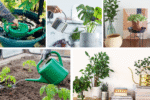Succulent plants have become one of the most popular choices for home gardeners, plant enthusiasts, and even beginners. Their stunning variety of shapes, textures, and colors make them a favorite for indoor spaces, balconies, or even as outdoor features. What sets succulents apart is their unique ability to store water in their leaves, stems, or roots, which allows them to thrive in arid conditions with minimal maintenance.
If you are new to gardening or simply looking for a low-effort way to add beauty to your home, succulents are the perfect plants to grow. In this guide, we’ll walk you through the basics of succulent care in a step-by-step manner so that you can enjoy lush, healthy, and vibrant succulents without stress.
Why Succulents Are Special

Succulents are plants adapted to survive in environments with limited water. Their thick, fleshy leaves and stems act as reservoirs, enabling them to thrive where other plants struggle. Some popular varieties include Aloe Vera, Echeveria, Jade Plant, Zebra Plant, and Haworthia.
The beauty of succulents lies not only in their resilience but also in their wide range of appearances. From rosette-shaped Echeverias to tall, tree-like Jade plants, succulents add an aesthetic touch that suits modern décor styles, minimalism, and even rustic settings.
Most importantly, succulents are forgiving plants. Even if you miss a watering or forget about them for a week, they often bounce back easily.
Step 1: Choosing the Right Succulent
Caring for succulents begins with selecting the right variety. Some succulents are better suited for indoors, while others thrive outdoors.
- Indoor Succulents: Aloe Vera, Haworthia, Snake Plant, and Jade Plant.
- Outdoor Succulents: Agave, Sedum, and Echeveria.
When choosing, think about the amount of sunlight your space receives. Indoor succulents do best near windows with bright, indirect light, while outdoor varieties prefer direct sun.
Step 2: Potting and Soil Mix
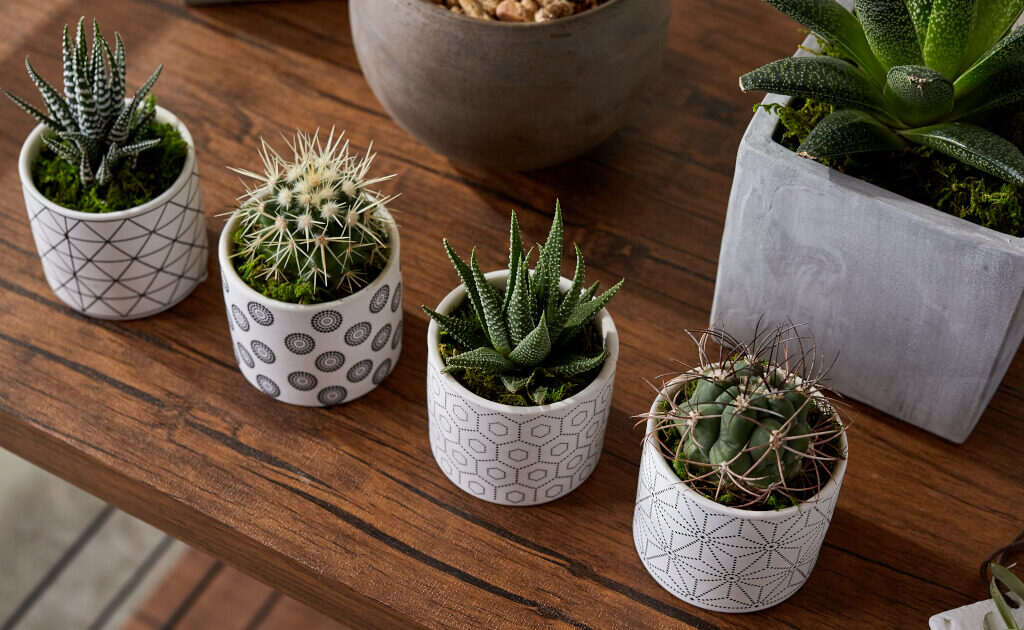
Succulents are highly sensitive to waterlogged conditions, so the right pot and soil are crucial.
- Pot: Use pots with drainage holes. Clay or terracotta pots are best because they allow excess moisture to evaporate.
- Soil: Regular garden soil retains too much water, which can rot succulents’ roots. Instead, use a well-draining soil mix. A good mix includes cactus soil or a blend of potting soil, coarse sand, and perlite.
This ensures that water flows out quickly, preventing soggy roots.
Step 3: Light Requirements
Light is one of the most important factors for succulent health.
- Indoors: Place succulents near a south or east-facing window where they can get at least 6 hours of indirect sunlight daily. If natural light is limited, supplement with grow lights.
- Outdoors: Most succulents love bright light but may need some shade during scorching summer afternoons to prevent sunburn.
A clear sign of insufficient light is when succulents stretch out and become “leggy.” Keeping them in the right spot ensures compact and vibrant growth.
Step 4: Watering Succulents the Easy Way
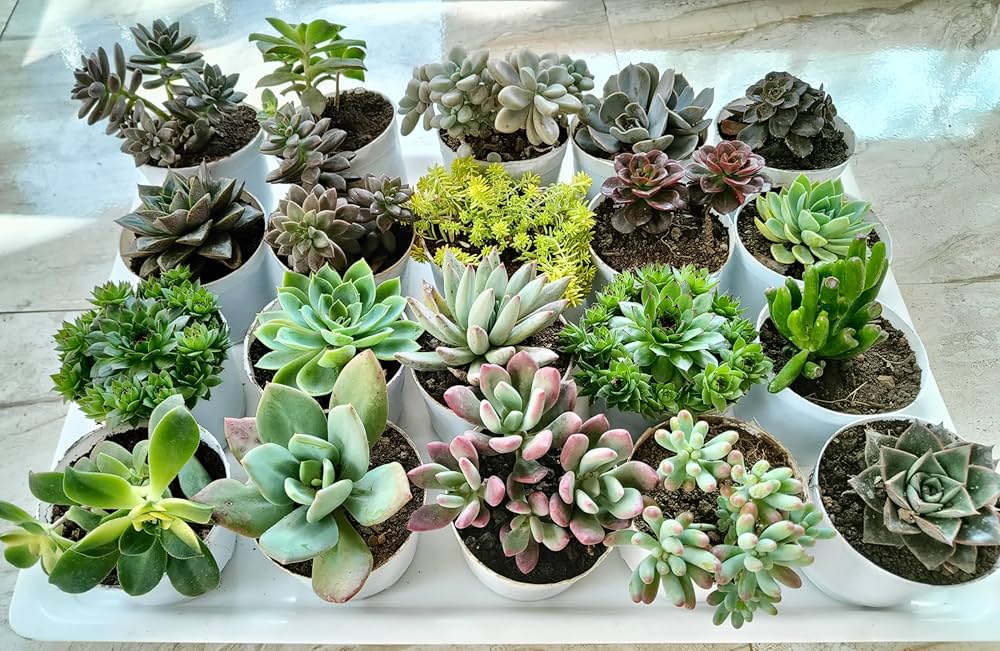
Watering is where most beginners go wrong. Since succulents store water, they don’t need frequent watering.
- Follow the Soak-and-Dry Method: Water the soil thoroughly until water drains out of the bottom of the pot. Then, wait until the soil is completely dry before watering again.
- Frequency: Generally, succulents need watering every 2–3 weeks indoors and weekly outdoors, depending on your climate.
- Signs of Overwatering: Mushy, yellow, or translucent leaves.
- Signs of Underwatering: Wrinkled or shriveled leaves.
By adjusting watering based on the plant’s appearance and soil dryness, you’ll keep your succulents healthy with minimal effort.
Step 5: Fertilizing for Growth
Succulents don’t need heavy feeding, but the occasional fertilizer helps them thrive.
- Use a balanced, diluted fertilizer (such as 10-10-10 or cactus fertilizer) during the growing season—spring and summer.
- Fertilize once a month at half-strength.
- Avoid fertilizing in fall and winter when succulents enter dormancy.
This small step ensures stronger root systems and more vibrant leaves.
Step 6: Pruning and Maintenance
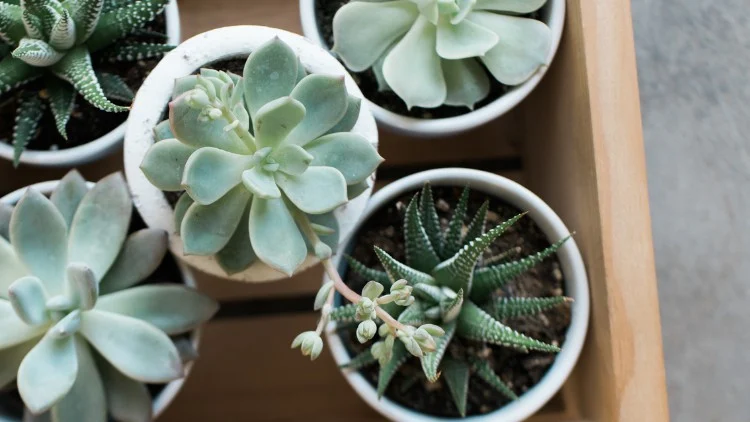
Succulents are naturally neat plants, but occasional care keeps them looking their best.
- Remove dried or dead leaves at the base to prevent pests.
- Trim off leggy growth and propagate the cuttings for new plants.
- Rotate pots every few weeks to ensure even sunlight exposure and symmetrical growth.
This keeps your succulents compact and attractive.
Step 7: Propagation – Multiply Your Succulents Easily
One of the most exciting aspects of succulents is how easy they are to propagate.
- Leaf Propagation: Gently twist off a healthy leaf, let it dry for a day or two, then place it on well-draining soil. Roots and new leaves will sprout in a few weeks.
- Stem Cuttings: Cut a piece of stem, let it callus for a day, then plant it in soil.
- Offsets/Pups: Many succulents produce baby plants at their base, which can be separated and potted.
This allows you to expand your succulent collection without spending extra money.
Step 8: Common Problems and Easy Solutions
Even though succulents are easy to care for, they can face issues.
- Overwatering/Root Rot: Always let soil dry before watering. Repot in dry soil if rot begins.
- Pests (Mealybugs, Aphids, Spider Mites): Use neem oil or insecticidal soap.
- Sunburn: White or brown spots indicate too much sun. Move plants to partial shade.
- Leggy Growth: Relocate to a sunnier spot or prune for propagation.
By recognizing these issues early, you can save your plant and keep it thriving.
Step 9: Seasonal Care
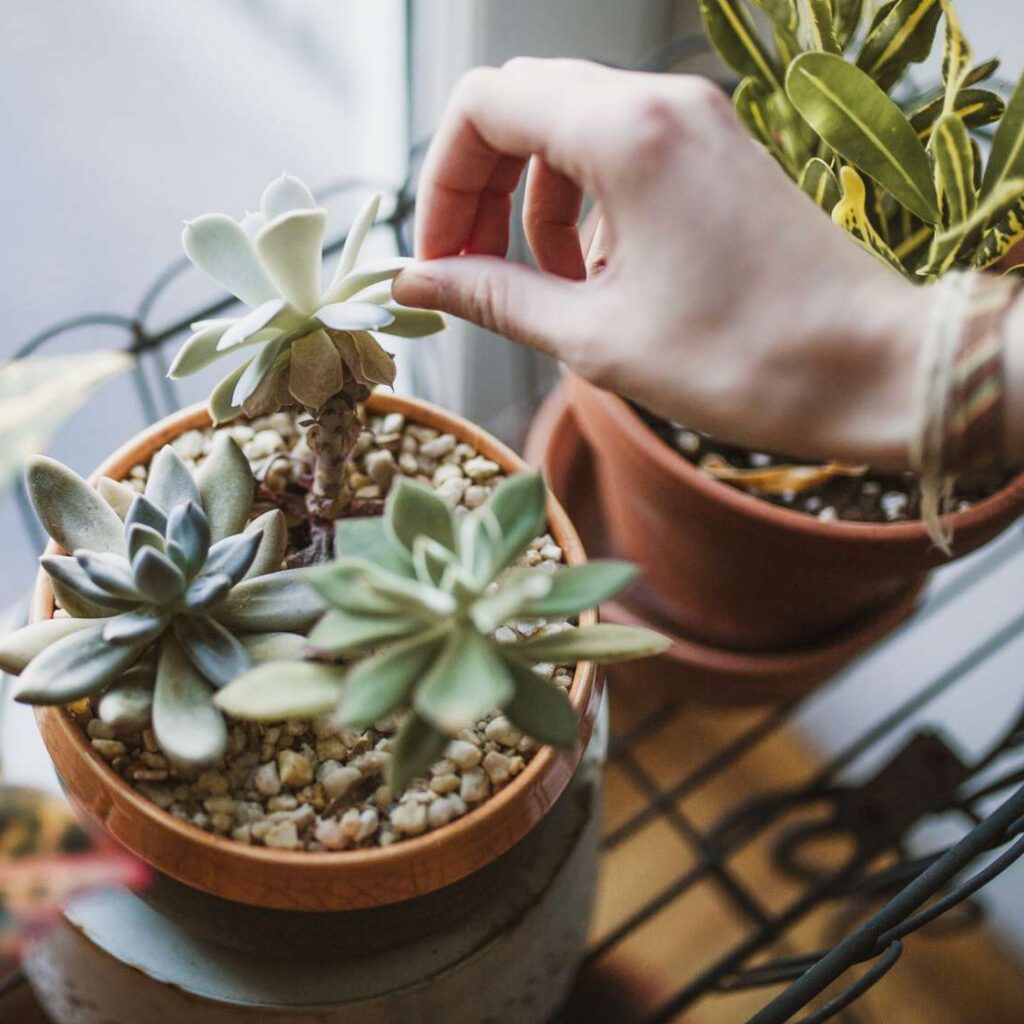
Succulents may need slight adjustments in care depending on the season.
- Spring/Summer: Active growth phase. Water and fertilize regularly.
- Fall/Winter: Dormancy period. Reduce watering and avoid fertilizing. Move indoor succulents away from cold drafts.
This seasonal rhythm ensures long-term plant health.
Benefits of Growing Succulents
Caring for succulents isn’t just about plant maintenance; it comes with many benefits:
- Low Maintenance: Perfect for busy people or beginners.
- Air Purification: Some succulents, like Aloe Vera, help improve indoor air quality.
- Aesthetic Appeal: They add greenery, texture, and charm to homes.
- Stress Relief: Taking care of plants promotes relaxation and mindfulness.
- Sustainability: Succulents require minimal water, making them eco-friendly.
Conclusion
Succulent plants are among the easiest and most rewarding plants to care for. With their ability to adapt, minimal watering needs, and stunning looks, they make a perfect addition to any indoor or outdoor space. By following the easy steps—choosing the right succulent, providing proper soil, ensuring adequate light, watering correctly, and maintaining them—you can enjoy a lush collection that thrives year after year.
Succulents prove that gardening doesn’t need to be complicated. Even with minimal effort, you can cultivate a stunning green corner in your home that continues to grow and multiply. For beginners and experienced gardeners alike, succulents are the ultimate symbol of easy plant care.



